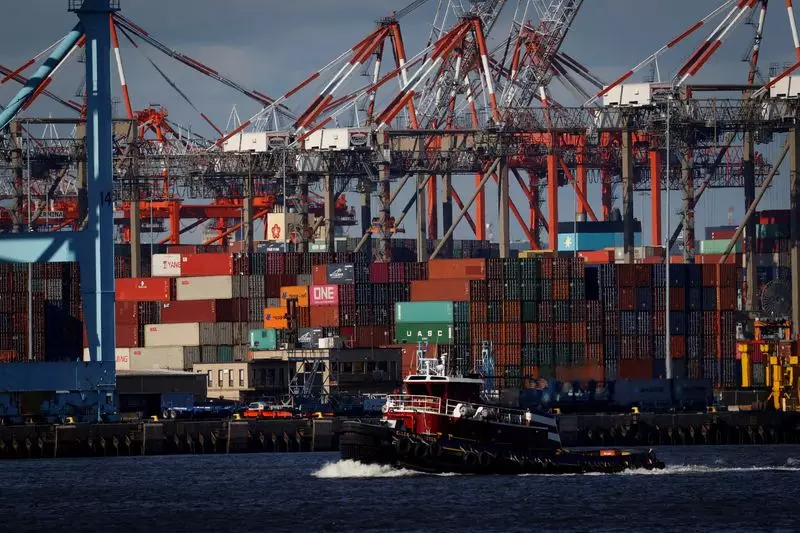The countdown has begun for a potential strike that could significantly impact the economy of the United States. The International Longshoremen’s Association (ILA) has announced that starting Tuesday, dock workers across the East Coast and the Gulf of Mexico will walk off the job. With this action, the ILA is demonstrating a firm stance against what it describes as decades of wage subjugation, highlighting the dispute’s roots in economic inequities that have festered for years. This could mark a historical event as it would be the first coast-wide strike of its kind since 1977, a time when labor relations faced different challenges and dynamics. The situation is particularly precarious given that the ports encompass the crucial shipping arteries that account for roughly half of the nation’s ocean freight activity.
Should the strike proceed as planned, it will not only disrupt the operational flow of goods but could potentially derail entire supply chains, affecting everything from consumer goods to essential commodities such as food and automobiles. The United States Maritime Alliance (USMX), representing various employer groups within the longshore industry, has remained largely silent regarding the imminent strike, leading to rising concerns among businesses and consumers alike. The absence of negotiations leading up to the walkout only heightens these anxieties, especially as there are no discussions scheduled before the Monday night deadline.
The implications of a strike are more than mere inconveniences—they are economically detrimental. Business leaders through the Business Roundtable have expressed alarm, warning that the anticipated labor stoppage could cost the U.S. economy billions of dollars each day. It is a precarious moment, as sectors that thrive on international trade could face serious operational challenges, potentially raising prices for consumers and propagating inflation—an issue that has become a critical point of concern as the nation approaches a presidential election.
As the situation develops, the political landscape remains closely tied to the fate of the strike. President Joe Biden has made it clear that he does not intend to intervene, indicating a commitment to collective bargaining as a principle. This declaration rests on the notion that interference could undermine the integrity of negotiation processes that are foundational to labor relations in America. However, the Taft-Hartley Act allows for executive intervention in cases where national security is at risk, a possibility that weighs heavily on the minds of lawmakers as they consider the repercussions of a coast-wide strike.
The White House’s non-intervention stance is a significant shift from conventional practices where past administrations have acted to avert significant labor disputes, particularly in sectors deemed vital for the country’s functioning. If Biden holds firm to his decision, it sends a strong message about the administration’s prioritization of labor relations and negotiation, albeit with risks surrounding it.
The ramifications of a potential strike extend beyond the immediate affects on dock workers and their employers; they resonate throughout the economy, influencing supply chains and consumer prices alike. The fragility of supply chains has been exposed in recent years, with disruptions causing visible gaps in product availability and inflated prices, a challenge that many consumers are still reeling from. As businesses look toward growth and recovery post-COVID-19, the lack of reliable shipping services could exacerbate delays and inventory shortages, pushing consumer frustration to new heights.
Moreover, industries reliant on shipping—particularly those importing and exporting significant quantities—find themselves in a precarious position as they navigate this turmoil. It will be essential for companies to develop contingency plans to mitigate the economic fallout, be it through rerouted shipments or redirected sourcing strategies.
The looming strike of the ILA is a stark reminder of the precarious balance between labor rights and economic stability. As the clock ticks down to the deadline, it becomes increasingly vital for both sides—the union and the employer coalition—to engage in meaningful negotiations. Failure to find common ground could lead to a crisis that impacts not only the workers involved but the broader economic landscape of the United States. As we watch the developments unfold, one can only hope for a resolution that satisfies the workers and restores the vital operational flow through the nation’s ports.

